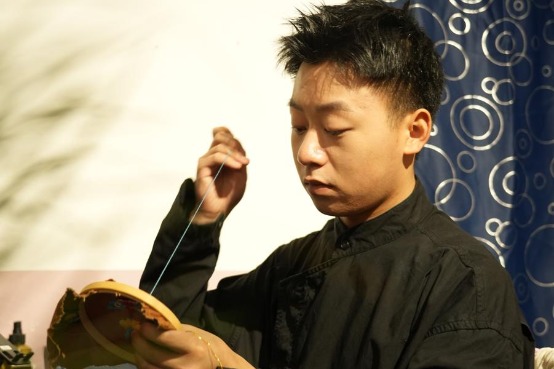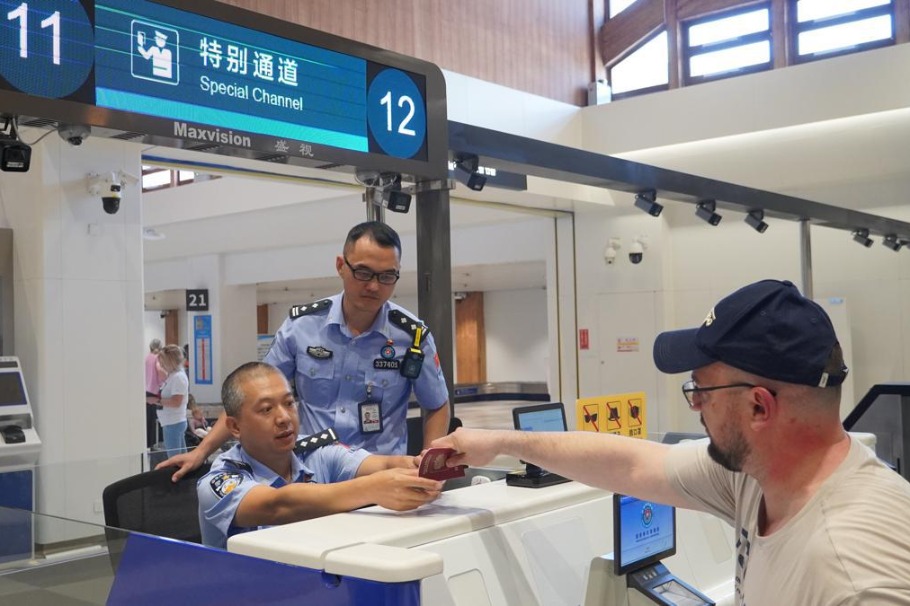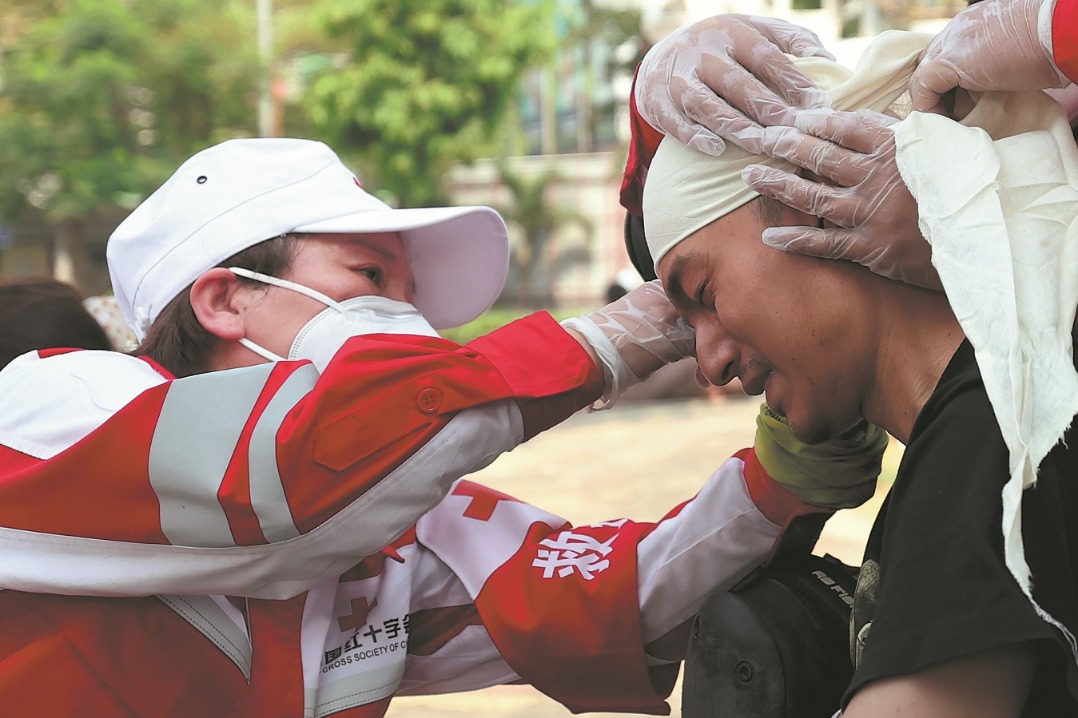Australian teacher, 69, treks Long March route


A 69-year-old Australian, Michael Sagan, recently completed his first 42-kilometer hike retracing part of the Red Army's historic Long March (1934-36) in East China's Jiangxi province.
On April 19, Sagan joined more than 100 teachers and students from Hejun Vocational College, starting their journey at the former site of the Central Political Department in Zikeng village, Bai'e township, Huichang county. The group crossed Gongjiang Bridge, passed Shanfengba Ferry and reached the Monument to the Departure of the Central Red Army on the Long March in Yudu county — the starting point of the Long March.
"After walking for 10 hours to reach the memorial at Yudu, we were wet and exhausted, but incredibly proud of our achievement," Sagan said. "The trek gave me the opportunity to walk Jiangxi's red soil, through its mountains, rivers and vibrant villages, while imagining its revolutionary past."
A retired English teacher, Sagan has held a decades-long fascination with China's modern history.
"My interest began when I read extensively about Asia's modern history," he said. "I became particularly curious about China's story, and that curiosity only grew stronger over time."
That passion led him to apply for an English teaching position at Hejun Vocational College after retirement. Though he was deemed too old for the role, the college invited him to visit.
He arrived in Huichang in April.
"I was thrilled to be in Yudu — standing at the very starting point of the Long March," he said. During his visit, he explored the Martyrs Memorial, the historic Gongjiang River crossing site and the Long March Museum.
"Seeing these places renewed my understanding of the Red Army's struggles and sacrifices in 1934," Sagan said. "So when the college offered me the chance to join them to retrace part of the Long March route, I immediately accepted the challenge."
The journey wasn't without setbacks. Sagan fell and injured his elbow along the way.
"They suggested I complete the march by car, but I refused. My minor injury was nothing compared to what the 86,000 soldiers endured at that time," he said.
Unlike major metropolises such as Beijing and Shanghai, which international tourists frequently visit, the area where Hejun Vocational College is located sees few foreigners.
Far from the bustle of urban life, Sagan said he felt he was seeing a different, uniquely charming side of China.
"There's not much traffic, people here are nice and hospitable, and you can see a very different China here," he said. "It's lovely. And I am surrounded by history."
Sagan emphasized the educational value of such experiences.
"It's vital, especially for students, to see and feel this history firsthand — to walk these paths and visit museums where the Long March stories come alive," he said. "This historic journey represents the first footsteps toward China's prosperity."





































